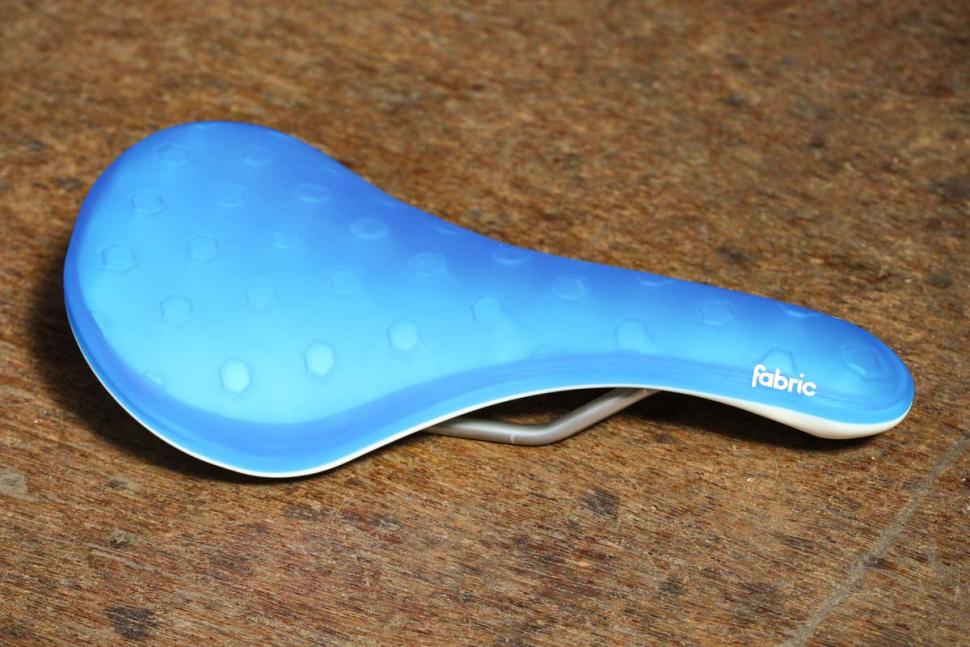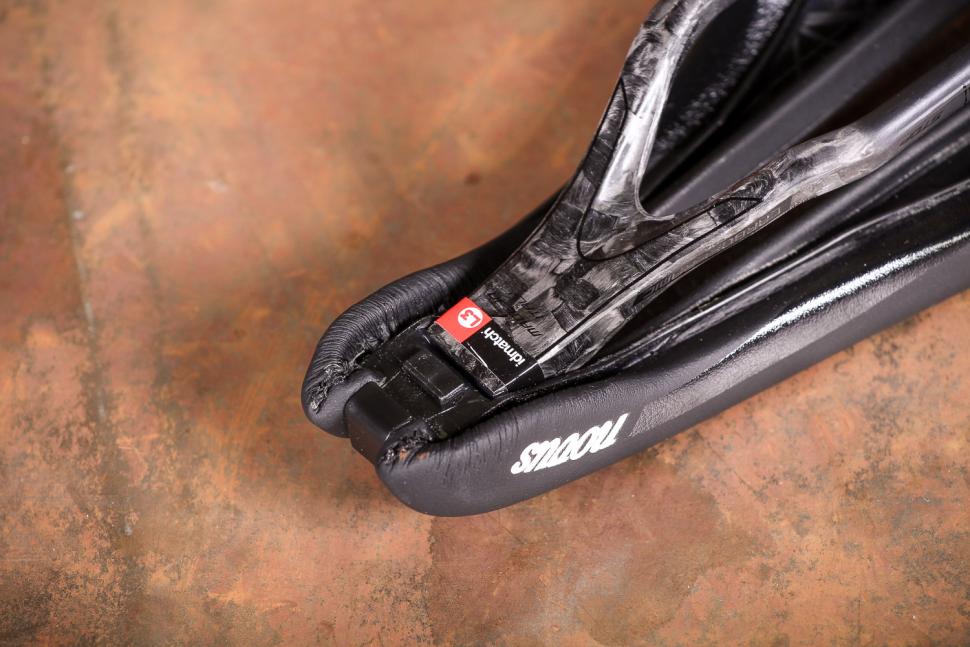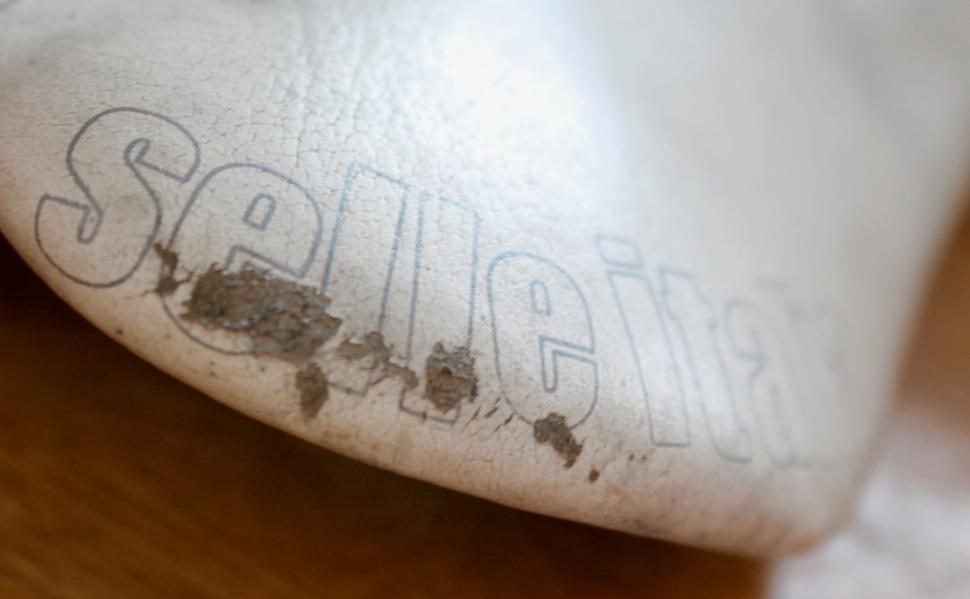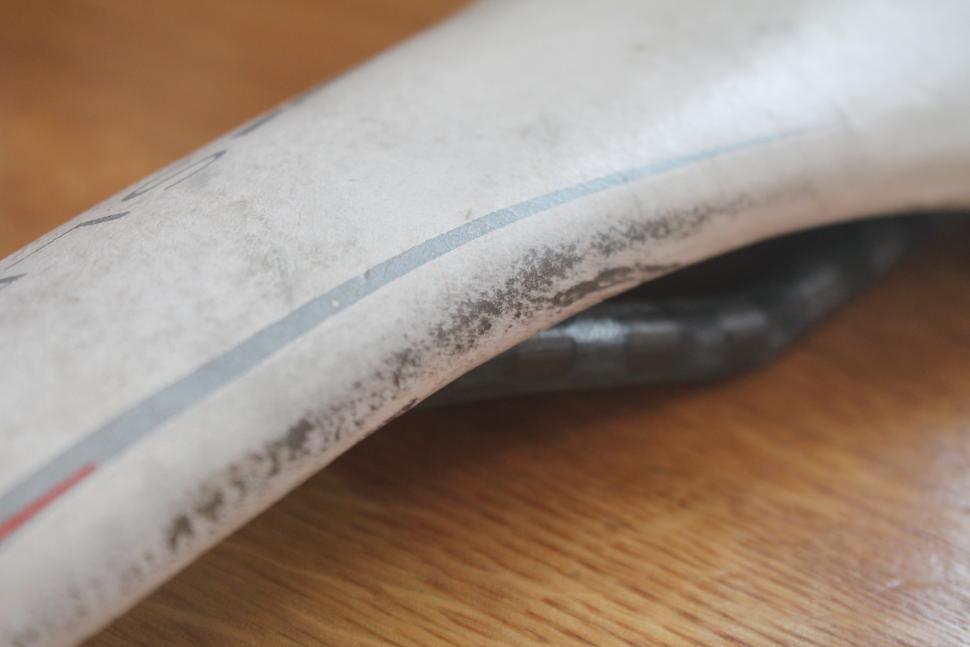- News
- Reviews
- Bikes
- Components
- Bar tape & grips
- Bottom brackets
- Brake & gear cables
- Brake & STI levers
- Brake pads & spares
- Brakes
- Cassettes & freewheels
- Chains
- Chainsets & chainrings
- Derailleurs - front
- Derailleurs - rear
- Forks
- Gear levers & shifters
- Groupsets
- Handlebars & extensions
- Headsets
- Hubs
- Inner tubes
- Pedals
- Quick releases & skewers
- Saddles
- Seatposts
- Stems
- Wheels
- Tyres
- Tubeless valves
- Accessories
- Accessories - misc
- Computer mounts
- Bags
- Bar ends
- Bike bags & cases
- Bottle cages
- Bottles
- Cameras
- Car racks
- Child seats
- Computers
- Glasses
- GPS units
- Helmets
- Lights - front
- Lights - rear
- Lights - sets
- Locks
- Mirrors
- Mudguards
- Racks
- Pumps & CO2 inflators
- Puncture kits
- Reflectives
- Smart watches
- Stands and racks
- Trailers
- Clothing
- Health, fitness and nutrition
- Tools and workshop
- Miscellaneous
- Buyers Guides
- Features
- Forum
- Recommends
- Podcast
 fabric_cell_elite_radius_saddle.jpg
fabric_cell_elite_radius_saddle.jpgWhen should you get a new saddle?
How do you know when it's time to change your saddle? Sometimes it's obvious, sometimes it's not, so we contacted some of the biggest saddle brands to get their advice.
Bear in mind that choosing when to replace your saddle isn't just a matter of aesthetics. A broken saddle could fail entirely, and that could be nasty. Plus, a worn out saddle might not be comfortable and won't necessarily support you correctly, possibly leading to injury.
Crash damage
If your saddle sustains an impact you should check carefully that it isn't damaged or get an expert to do the job for you.
"A bent metal rail might look okay to ride, but swap it out as soon as possible because the change in the level of the saddle will mean your body will have to adapt whilst riding which could cause injury to creep up on you," says Neil Cousins of Fabric. "Also, the rail material strength could be compromised in extreme cases.
Read 20 of the best saddles — the seats that improve cycling comfort for men and women
"Check carbon rails where they exit the seatpost clamp for signs of splintering and also where they enter/exit the saddle base. Any splintering will require the saddle to be replaced. Check the base for splintering and/or discolouration from twisting too."
Selle Italia's Massimo Perozzo agrees that you need to check the saddle thoroughly.
"The bodywork must not be "crashed" or damaged in order to ensure the correct support of the weight and avoid any situations of risk," says Massimo. "It must be in the same shape and position as it was before the impact."
Here are 9 of the best women's saddles
You should also check out the cover, where any damage is likely to be pretty obvious.
"See if there is any damage that will let water or sweat in," says Fizik's Carlo Ferrero. "This could mess up the performance of the foam.
"If you're in any doubt about your saddle after a crash, replace it — especially if it is a carbon saddle."
General use
Even if you don't damage your saddle in a crash, it'll need replacing sooner or later.
"The padding will not be able to withstand the stresses of the weight of the cyclist for ever, and in the course of time it will undergo some deformations or changes," says Massimo Perozzo.
"Any type of flaw, deformation or change in colour in the areas subject to greatest stress indicate that the product has reached the end of its useful life and must be replaced. For safety reasons, Selle Italia recommends replacing the product 10 years after its purchase, or whenever there are signs of structural degradation."
Check out 6 of the best short saddles
10 years? That sounds pretty generous, but don't get too excited; Carlo Ferrero of Fizik suggests half that, whether or not there are any signs of ageing, and considerably shorter in most cases.
"Our experience tells us that a professional cyclist changes the saddle after 10,000km (about 6,200 miles)," says Carlo, "This is due to the fact that the amount of time they spend in the saddle and the power they deliver is very high in a very short period (10,000km in three months, more or less).
"For an amateur rider, we suggest a saddle change every 15,000-20,000km (9,300-12,400 miles). This doesn't mean the saddle is not usable after this distance, but the performance of the padding and the shell will start to deteriorate."
What happens to a saddle over time?
"Mountain bikers and gravel riders in abrasive baggy shorts and riding in mud will eat through almost any cover out there, especially if they live near the coast or in the gritty north of the UK," says Neil Cousins.
"As long as the cover still resists water, you’re good to go, but if it lets water into the padding and wets your shorts consistently, you might want to change the saddle or continue to ride it throughout the winter and treat yourself to a new one when the weather gets better."
"Saddles with split bases or noses can sag or tilt to the side over time. This is easy to check: place a book on top and use a spirit level parallel to the bottom bracket axle. The sides should be level.
"Check for hard spots in the padding. The padding materials used in modern saddles are pretty good and will likely last the lifetime of a saddle. Even if hardening does occur, it does so slowly along with the rider's resilience to it."
Fizik's Carlo Ferrero says that a carbon saddle will maintain its performance longer, whereas one with a nylon shell will be more compliant to start with but its performance will deteriorate sooner.
Take a look at 13 of the best high-performance saddles
Massimo Perozzo of Selle Italia warns that it's important to get your saddle positioned correctly to help prevent it becoming deformed and weakened with use.
"The classic example is the saddle placed too far back that leads the cyclist to assume an advanced position and then put most of their weight in the middle of the saddle," says Massimo.
"In this case you risk the saddle deforming in the middle and causing a breakthrough that will result in it resembling a horse saddle. It is essential to know the biomechanical reference point (BRP) of your saddle and how to adjust it properly."
Getting a bike fit is the best way to make sure your saddle — along with everything else — is set up correctly.
Mat has been in cycling media since 1996, on titles including BikeRadar, Total Bike, Total Mountain Bike, What Mountain Bike and Mountain Biking UK, and he has been editor of 220 Triathlon and Cycling Plus. Mat has been road.cc technical editor for over a decade, testing bikes, fettling the latest kit, and trying out the most up-to-the-minute clothing. He has won his category in Ironman UK 70.3 and finished on the podium in both marathons he has run. Mat is a Cambridge graduate who did a post-grad in magazine journalism, and he is a winner of the Cycling Media Award for Specialist Online Writer. Now over 50, he's riding road and gravel bikes most days for fun and fitness rather than training for competitions.
Latest Comments
- David9694 1 sec ago
What are left with, from among the individual builders listed here I wonder, how many are taking orders? https://www.framebuilding.com/custom_uk...
- Rory26 23 min 52 sec ago
It looks as if this article has been written by a dyed in the wool petrolhead. Why does he give so much coverage to the views of motorists?. The...
- Hirsute 24 min 38 sec ago
Essex police think this is only a letter. Didn't even touch the central line. My wife was not happy.
- Simon E 29 min 24 sec ago
Those suburban commuters are just selfish. They don't want to acknowledge how their choice to use private car transport impacts negatively on...
- Simon E 1 hour 21 min ago
And a handy way for arseholes to excuse their shitty behaviour....
- eburtthebike 1 hour 55 min ago
It was only a cyclist, I don't know what all the fuss is about....
- Bigtwin 1 hour 56 min ago
Wonder if they could adapt it slightly to tell you when you should breathe?
- Bigtwin 2 hours 28 min ago
This is a full-on professional-level race bike that can be ridden by the masses. It's over eight and a half grand for godness' sakes! And where...
- bmxboyx01 4 hours 1 min ago
It has to be an organised group. My mate had his Canyon gravel bike with every single upgrade going on it. So many go each year, but the sleepy...






Add new comment
3 comments
Saddle manufacturer says saddle needs replacing often... What a surprise.
When to replace your saddle?
As soon as it fails the sniff test.
Replace every 15,000 to 20,000km? My Brooks is just about worn in after that.